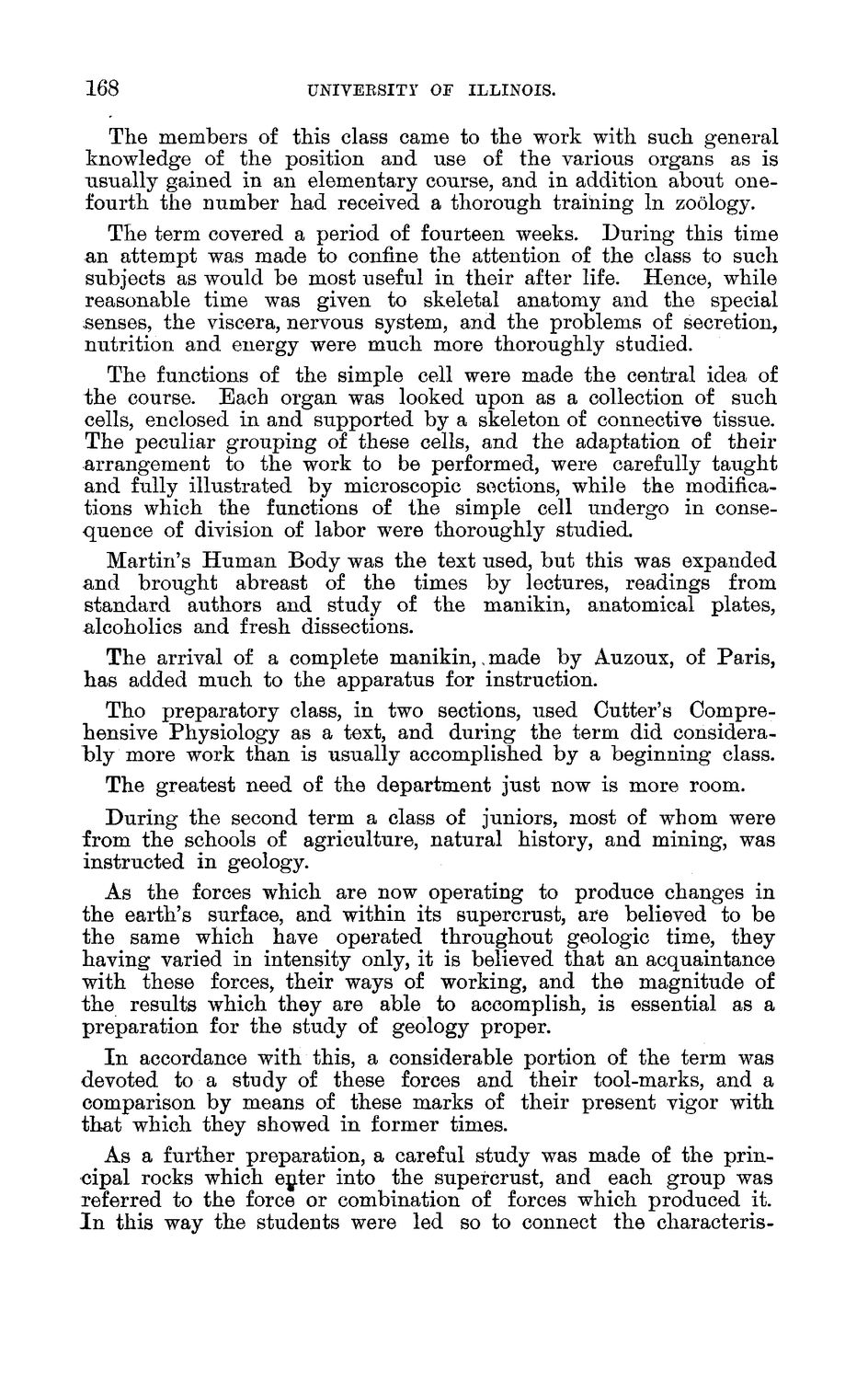| |
| |
Caption: Board of Trustees Minutes - 1888
This is a reduced-resolution page image for fast online browsing.

EXTRACTED TEXT FROM PAGE:
168 UNIVERSITY OF ILLINOIS. The members of this class came to the work with such general knowledge of the position and use of the various organs as is usually gained in an elementary course, and in addition about onefourth the number had received a thorough training In zoology. The term covered a period of fourteen weeks. During this time an attempt was made to confine the attention of the class to such subjects as would be most useful in their after life. Hence, while reasonable time was given to skeletal anatomy and the special senses, the viscera, nervous system, and the problems of secretion, nutrition and energy were much more thoroughly studied. The functions of the simple cell were made the central idea of the course. Each organ was looked upon as a collection of such cells, enclosed in and supported by a skeleton of connective tissue. The peculiar grouping of these cells, and the adaptation of their arrangement to the work to be performed, were carefully taught and fully illustrated by microscopic sections, while the modifications which the functions of the simple cell undergo in consequence of division of labor were thoroughly studied. Martin's Human Body was the text used, but this was expanded and brought abreast of the times by lectures, readings from standard authors and study of the manikin, anatomical plates, alcoholics and fresh dissections. The arrival of a complete manikin,, made by Auzoux, of Paris, has added much to the apparatus for instruction. Tho preparatory class, in two sections, used Cutter's Comprehensive Physiology as a text, and during the term did considerably more work than is usually accomplished by a beginning class. The greatest need of the department just now is more room. During the second term a class of juniors, most of whom were from the schools of agriculture, natural history, and mining, was instructed in geology. As the forces which are now operating to produce changes in the earth's surface, and within its supercrust, are believed to be the same which have operated throughout geologic time, they having varied in intensity only, it is believed that an acquaintance with these forces, their ways of working, and the magnitude of the results which they are able to accomplish, is essential as a preparation for the study of geology proper. I n accordance with this, a considerable portion of the term was devoted to a study of these forces and their tool-marks, and a comparison by means of these marks of their present vigor with that which they showed in former times. As a further preparation, a careful study was made of the principal rocks which enter into the supercrust, and each group was referred to the force or combination of forces which produced it. I n this way the students were led so to connect the characteris-
| |